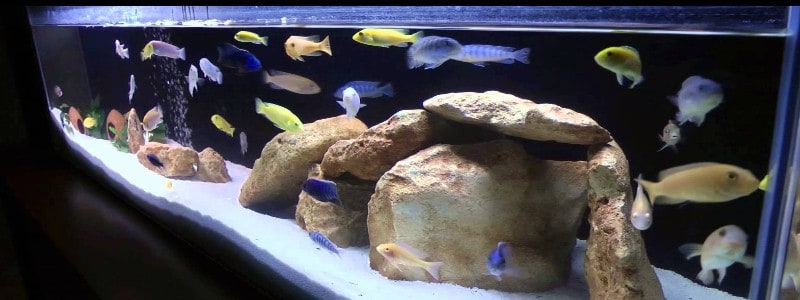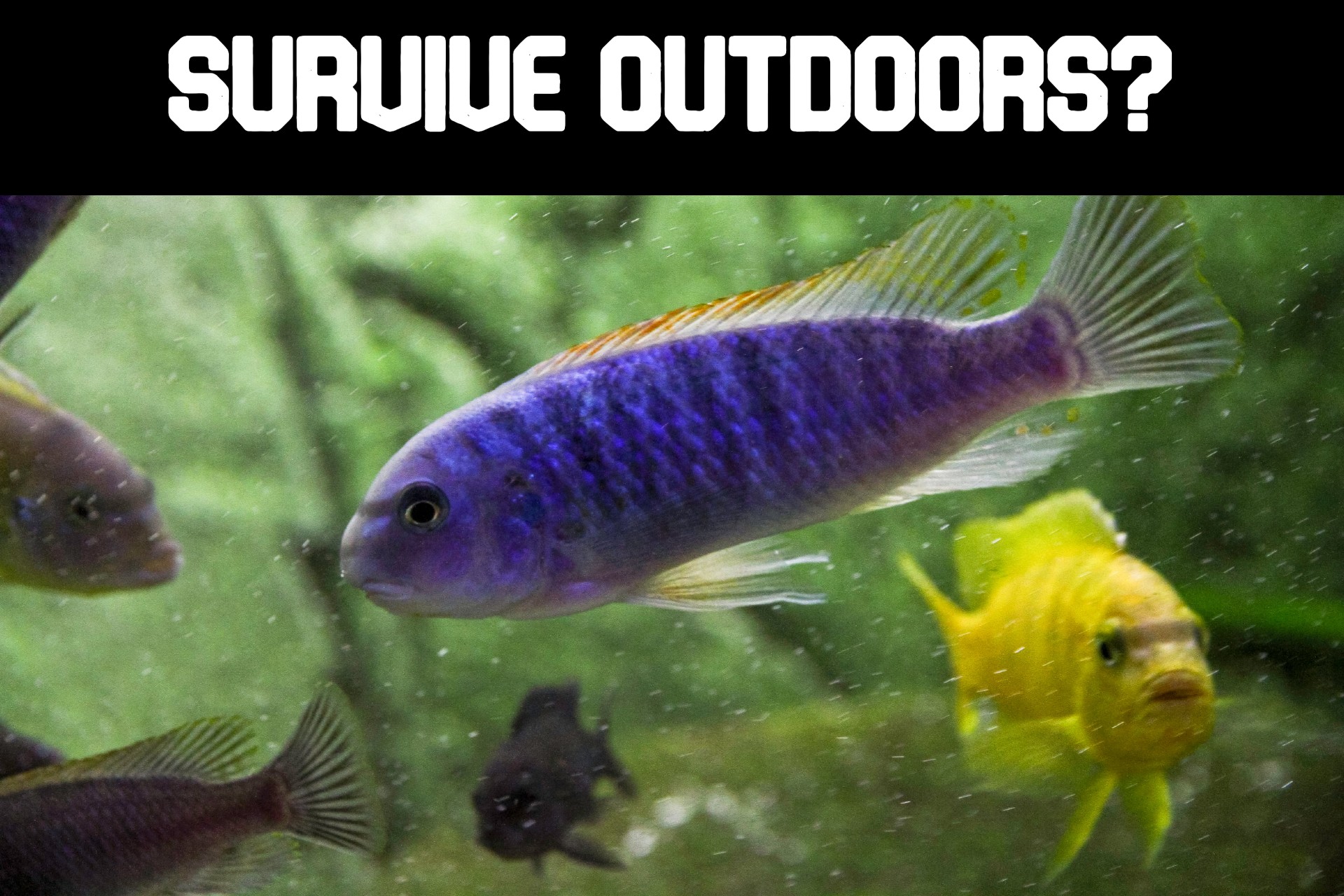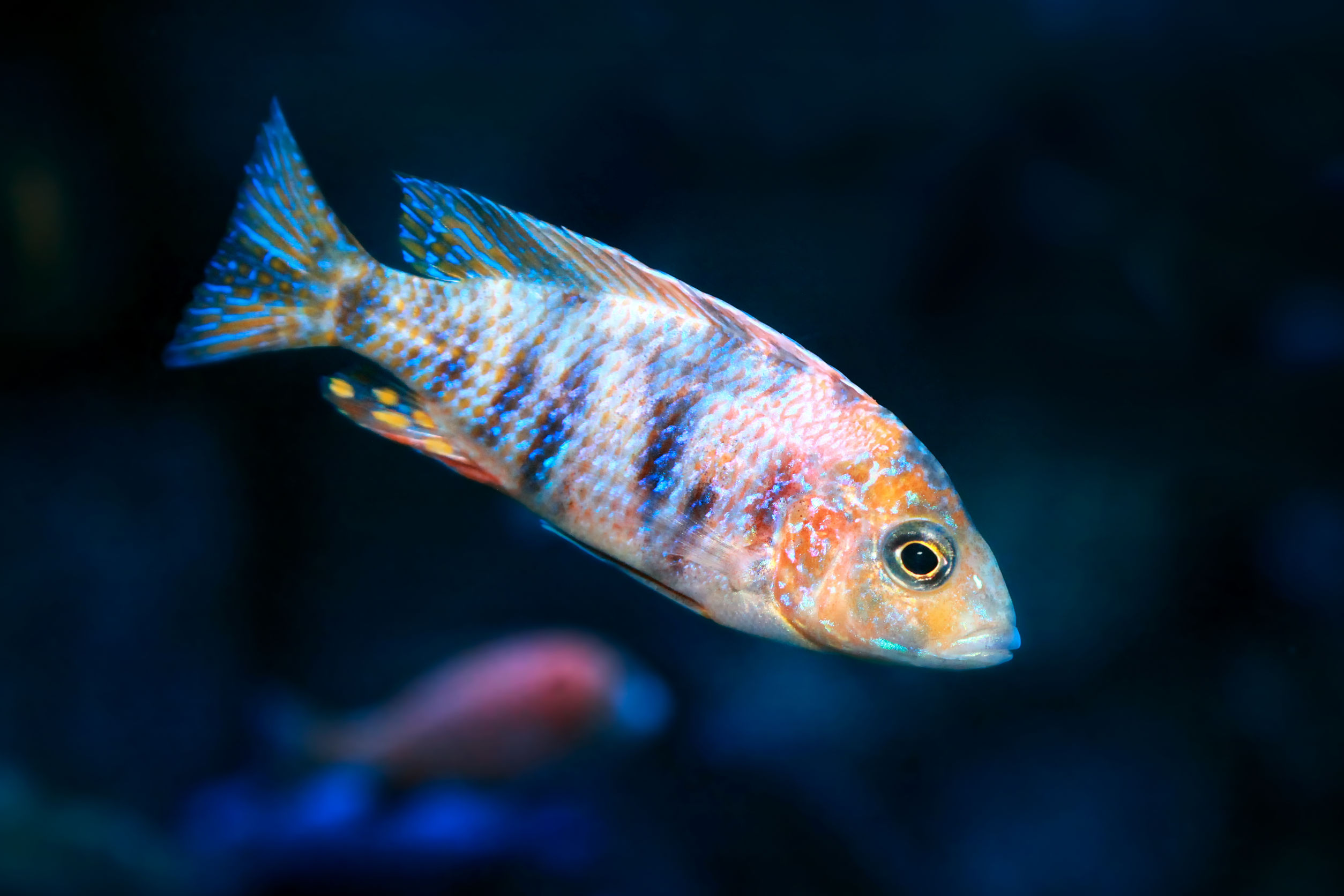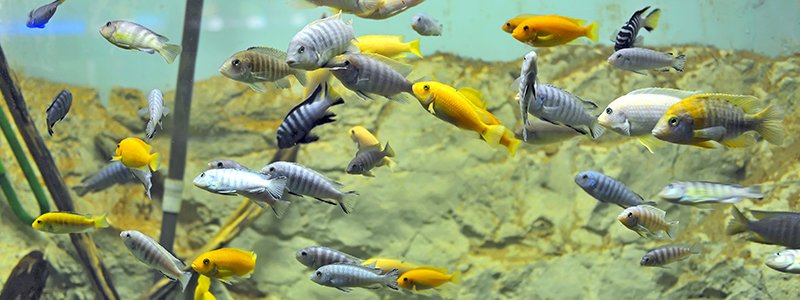Cichlids are commonly known for their penchant for tank destruction. Most of the large breeds will poke around and unsettle the substrate, while also causing disruption and destruction to the aquarium plant life. Even so, they are colorful, active fish and a popular option for aquarium hobbyists. What most fish keepers want to know is, which Cichlids are the smallest and least prone to aggressive and destructive behavior.
What Cichlids stay small? Dwarf cichlids do. They are a type of cichlid that stays quite small throughout their lifespan. While there is no official classification of dwarf cichlid length, most grow to be only between 3 and 4.7 inches.
I was recently asked how the Dwarf Cichlid compares to the regular Cichlid and if the size difference really has an impact on the fishkeeping experience. Most hobbyist fish keepers also want to know how many Dwarf Cichlids they can keep in their tank and if tank size can affect just how big these fish grow. I found these to be the most interesting questions, so I took the time to do a bit of research and find out. To learn more about what I found out, keep reading.
Cichlid Size vs Dwarf Cichlid Size | How Does the Dwarf Cichlid Compare to the Regular Cichlid?
What I have found in the fish-keeping community is that there is some confusion around what is considered a “Dwarf Cichlid”. It must be noted that a few years ago, a Dwarf Cichlid was one particular South American Cichlid; the Apistogramma agassizii. Nowadays, the term is used to describe any type of Cichlid that does not grow beyond 4.7 in.
Due to the smaller size of the Dwarf Cichlid, it can be kept in a smaller tank than a regular size Cichlid. The Dwarf Cichlid is also known to be far less keen to destroy its tank, which makes it a firm favorite for beginner fish keepers. While the regular Cichlid is prone to aggressive behavior, Dwarf Cichlids are typically non-aggressive and more peaceful. This generally makes them easier to work with, especially for inexperienced fish keepers.
That being said, the question begs to be answered; just how big do Dwarf Cichlids get and how does this compare to normal Cichlids? While most Dwarf Cichlids will grow to between 3 inches and 4.7 inches, the traditional sized Cichlid can reach a whopping 8 inches to 10 inches in size. That is nearly double the size of the Dwarf Cichlid, so I would say that if you are working with a small home aquarium, the Dwarf Cichlid makes for a better choice.
5 Types of Cichlids that Stay Small

If you want to include Dwarf Cichlids in your tank and specifically want to ensure that you get a small and peaceful breed, these are four top choices for you to consider:
1. Kribensis (Pelvicachromis pulcher)
This cichlid can be found in the African water in Southern Nigeria. Shallow water and heavy vegetation is their preference. In the wild, they spend most of their time in loose groups or in little caves that they create within the roots of aquatic plants. One kribensis will do well in a tank, however, if you really want their behavior I recommend keeping a small bunch together.
2. The Golden Dwarf Cichlid (Nannacara Anomala)
This is a South American species naturally found in low-lying coastal areas and flooded grasslands. The males typically grow to around 3 inches in size, whereas the females are quite a lot smaller and only grow to around 1.5 inches in size. You can keep two (a pair) Golden Dwarf Cichlids in a 20-gallon tank. It is not a good idea to put two males together – rather keep one male and one female together as a couple. If you have a larger tank, you can keep a harem, which consists of several females kept with just one male.
3. The Shell Dweller Cichlid (Neolamprologus Multifasciatus)
These particular African Cichlids, native to Lake Tanganyika, are the smallest of the Dwarf Cichlids and a popular choice for beginner fish keepers. They are found living in the empty shells of Neothauma snails and are quite elusive and shy. Their tank requirements are simple with no need for more than 20 gallons of water however; they do well in larger tanks too.
The males typically grow to a maximum size of 2 inches whereas the females only grow to around 1 inch in size. It is important to note that these Cichlids are quite shy and because of their small size, they do not enjoy competing with other species for food. It is best not to pair them with more aggressive species of fish, as they will probably suffer in terms of nutrition and also experience a high level of stress.
4. The German Blue Ram Cichlid (Mikrogeophagus Ramirezi)
These South American Dwarf Cichlids are one of the smallest species and even fall below the typical Dwarf Cichlid size classification. The male German Blue Ram Cichlids typically grow to around 2.5 inches, whereas the females are slightly larger, reaching around 3 inches in length. Most fish keepers manage to keep a pair comfortably in a 20-gallon tank.
One thing to note is that this Cichlid is not a good option for absolute beginner fish keepers. Many who have just got a German Blue Ram to find that it dies soon after they introduce it to the tank. These Dwarf Cichlids must only be introduced to a well-established tank with ultimate living conditions. They can also be quite fussy about what they eat. As sensitive and delicate fish, they are best suited to the home aquariums of experienced fish keepers.
5. The Cockatoo Cichlid (Apistogramma Cacatuoides)
The Cockatoo Dwarf Cichlid gets its name from the appearance of its colors and lines, which resemble a Cockatoo’s crest. This South American Cichlid is actually found in the Amazon River basin. The males are one of the bigger Dwarf Cichlids commonly kept, growing to around 4 inches in size, whereas the females are quite a lot smaller, only growing to around 2 inches in size.
These are completely non-aggressive Cichlids, so could be a good choice for beginners to get in order to start learning about Cichlid behaviors and sensitivities. They will happily live in large groups of their own species as well as share a tank with other larger peaceful species.

What Size Tank Do Most Dwarf Cichlids Need?
Tank size is important for hobbyist fish keepers as the size of the tank can have an impact on just how happy and comfortable your fish community is. You do not want to have a tank that is too small for a certain fish species or things may become uncomfortable for both the tank inhabitants and the fish keeper.
Many first-time Cichlid owners want to know what size tank they need to get. In fact, I was recently asked how many Cichlids could be kept in a 30-gallon tank. To ensure that you aren’t pushing the limit when it comes to tank size, try to stick to a basic rule of one inch of fish per two to five gallons of water. Of course, it is not an exact science – you can use this “rule” as a guideline to approximate tank sizes for your fish.
There is no need to panic if your tank size is out by a half-inch or so. How many Cichlids can I put in a 30-gallon tank? This size tank can host two to three Dwarf Cichlids that are no more than 3.9 inches in size. While some Dwarf Cichlids will live happily in a 20-gallon tank, it is better to opt for a larger size tank, especially if you want to include a few other interesting species to act as tank mates and community members.
Do Cichlids Grow to the Size of the Tank?
Many fishkeepers just getting into the hobby of fish keeping wonder if the long-believed myth that fish can grow to the size of their tank is true. The truth of the matter is that while tank size can affect the overall health of your Cichlid, it cannot affect the size that it grows to. For instance, keeping a regular-sized Cichlid in a small (undersized) tank will not ensure that it simply does not grow to size.
It will grow to size, but its health will suffer as its environment will not be able to provide a good growing space for it. The misconception that fish of any kind can grow to the size of their tank is due to some fish having a growth spurt when they are moved from an undersized tank to a more suitably sized tank. This growth spurt is due to the healthier living environment being able to provide what the fish needs for healthy growth and living. The fish will not grow beyond its regular size even if you provide it with a massive tank.
Final Words
When it comes to finding Cichlids that stay small, any of the Dwarf Cichlids are a good choice. Even the smaller breeds of regular Cichlids will grow fairly large and probably crowd a smaller tank. Always take the tank size and expected size of the Cichlid into account before getting new tank mates. While you might want to enjoy the colorful display of the Cichlid breed, you will need to ensure that the size of the tank provides the ideal living environment for its long-term health.





